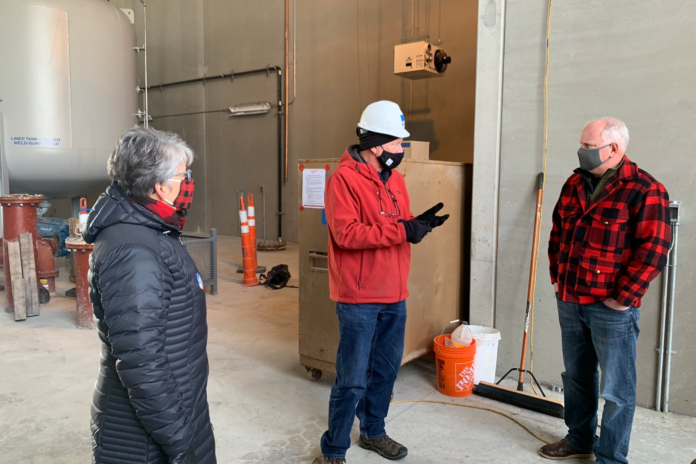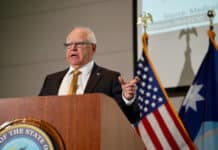(The Center Square) — Minnesota Gov. Tim Walz on Monday announced his 2021 Local Jobs and Projects Plan that aims to spend $518 million on infrastructure projects across the state.
Walz compared infrastructure spending to repairing a house’s roof.
“You fix your roof before it collapses. You repair a leaky pipe before it leads to water damage. That’s exactly what this plan prioritizes — taking care of what we have,” Walz said in a statement. “By maintaining existing assets, we can keep our state’s infrastructure strong and reliable for generations to come. What’s more, we can create jobs that boost our economy in the process.”
The plan includes $240 million in General Obligation (GO) bonds, $250 million in appropriation bonds, and an additional $28.3 million in general fund cash. Appropriation bonds are repaid through annual appropriations and can finance a broader range of capital projects compared with GO bonds.
Walz’s office says deferred maintenance needs for state agencies total more than $1.7 billion.
Nearly half their 2021 capital budget would support asset preservation at state agencies and higher education institutions, such as roof replacements and exterior repairs, Walz’s office said.
Their recommendation also includes a $43 million upgrade to Capitol security.
The plan includes $100 million in Housing Infrastructure Bonds to preserve and build new housing opportunities statewide and $150 million to rebuild Minneapolis and Saint Paul from riot damage in 2020.
The plan recommends:
- $4.5 million for a new State Veterans Cemetery in Redwood Falls spent alongside a federal $5.99 million federal grant.
- $10 million for Minnesota’s share of work for a second daily Amtrak train between the Twin Cities, Milwaukee, and Chicago. The Federal Railroad Administration has awarded a total of $44 million grants for this project.
- $15 million to support capital projects from community-based organizations.
- $14.5 million in General Obligation Bonds to retain federal matching funds.
The 2021 Capital Budget Recommendation of $240 million in GO Bonds is the 10-year average of GO Bonds in odd-numbered years, Minnesota Management and Budget spokesperson Chris Kelly told The Center Square.
The total principal and interest for $240 million in GO bonds would be about $281 million over 20 years, Kelly said.
State Rep. Fue Lee, DFL-Minneapolis, chair of the House Capital Investment Committee, said the plan “puts Minnesota on the right track when it comes to creating new jobs, investing in our communities, and keeping a focus on inclusion and equity.”
“With low interest rates, Minnesota’s AAA bond rating, and a great need to help our state bounce back from the economic impact of COVID-19, there’s no reason Minnesota shouldn’t have a robust jobs and local projects bill this year,” Lee said in a statement. “Now is the time to invest in Minnesota.”
In October, lawmakers approved a $1.9 billion bonding bill. In response to asking why more spending was needed, Walz said, “the needs are there.”
State Rep. Pat Garofalo, R-Farmington, argued the state should rethink its spending plan.
“The decisions made pre-Covid sometimes don’t make sense post-Covid. Sticking with spending $$ on rush hour mitigation and fixed rail transit lines is foolish,” Garofalo tweeted. “Instead of ‘maintaining’ – let’s debate how we are going to do things differently.”
The state will hold a revenue estimating conference on Friday.















